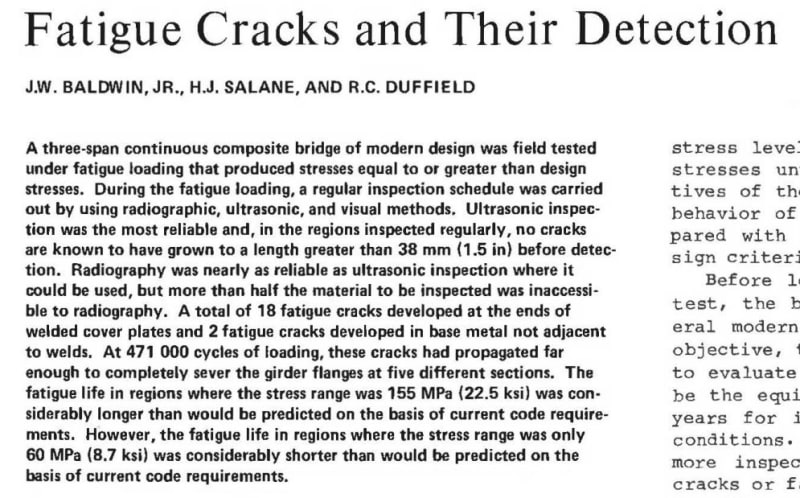A client has a 25 year steel portal frame warehouse with an existing crane rails and an existing 3 ton gantry crane in use. He would like to add two more 3 ton gantry cranes and says that is what the building use to have. That was a couple owners ago.
The warehouse is approximately 32m (110 ft) wide with central row of columns - 2 bays in the long direction. He would like to reuse the existing crane rails. Crane rails are continuous UB's with channel fixed to top flange and supported at each column on a steel corbel.
With such a structure, how is fatigue taken into account? As the building is 25 years old, and we currently do not have documentation (or an estimate) of how many cycles this has seen, how would you approach the fatigue part?
The warehouse is approximately 32m (110 ft) wide with central row of columns - 2 bays in the long direction. He would like to reuse the existing crane rails. Crane rails are continuous UB's with channel fixed to top flange and supported at each column on a steel corbel.
With such a structure, how is fatigue taken into account? As the building is 25 years old, and we currently do not have documentation (or an estimate) of how many cycles this has seen, how would you approach the fatigue part?

![[lol] [lol] [lol]](/data/assets/smilies/lol.gif)

![[pipe] [pipe] [pipe]](/data/assets/smilies/pipe.gif)
![[ponder] [ponder] [ponder]](/data/assets/smilies/ponder.gif)
